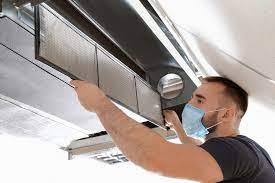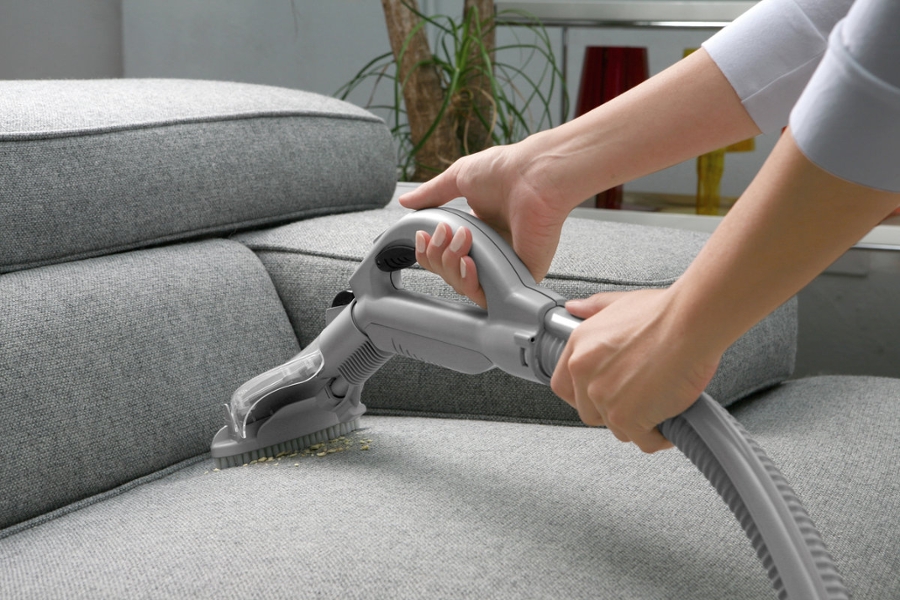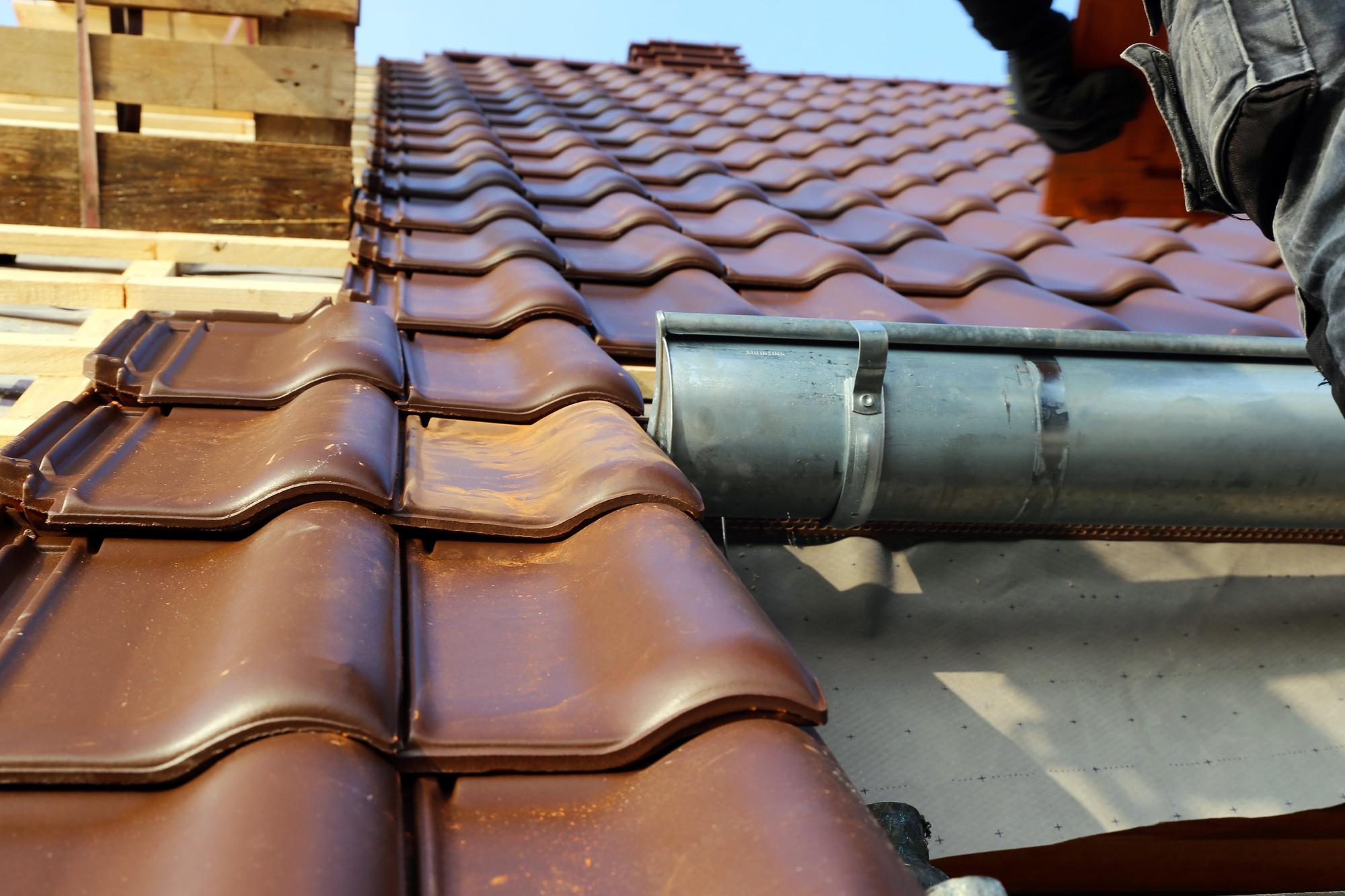Everyone wants to be well and protect their loved ones. HVAC-borne germs can be dangerous for loved ones. Media attention has been drawn to efforts to eradicate HVAC germs from hospitals due to the emergence of antibiotic-resistant germs and because hospitals are intended to contain contagious and sick people.
Consider these statistics from Healthcare Facilities Today: Healthcare-associated infections (HAIs) kill more people in the United States than AIDS. Experts believe that the most deadly and on the rise in America are the airborne forms of these diseases.
What does HAIs have to do with the need for reducing home germs in HVAC systems?
Although the risks to your HVAC system are not as severe as those that face hospitals and healthcare facilities in the long term, they still pose the same dangers. Hospitals and healthcare facilities can teach you a lot about keeping your HVAC system clean.
You can do several things that will reduce the risk of an airborne illness being transmitted via your HVAC system. This is particularly important during flu season, when there is a higher risk of airborne diseases. This guide will show you how to reduce the number of bacteria your HVAC system can produce.
As much as possible, keep the air moving.
The latest innovations in HVAC technology make it easier and more efficient to keep our homes cool in summer and warm in winter. But, this kind of environmental control comes with a price.
You are becoming more dependent on recycled air when your HVAC systems are the only ones controlling temperature. This means that germs can enter your home and are not being eliminated. Ventilation fans and opening windows will help move the stale air and reduce the number of airborne infectious diseases in your home.
However, it is worth noting that even at higher temperatures, moving air can make your home more comfortable. A summer cross-breeze can be used to cool your home. It acts as a fan and reduces humidity. Cracking a window now and then can help prevent germs from spreading at home.
You can turn off your AC and open a few windows, even if it’s warmer than you normally set on your thermostat. Even if it is only in the evenings, this will greatly improve the air quality in your home.
You can control the humidity levels in your home.
Winter is flu season for several reasons. You spend more time indoors, where germs can easily accumulate. Humidity is another factor.
CNN points out that the humidity levels in winter America can drop to as low as 10%. This is the same as the humidity levels in the Sahara Desert.
Low humidity environments are more conducive to spreading viruses like flu and other illnesses. Keeping your home more humid can help you and your family stay healthier.
CNN reports that scientists increasingly agree that homes with a humidity level between 40% and 60% have lower flu germ levels. Flu viruses can be reduced by 30% if the humidity is maintained at these levels.
Comfort-wise, increasing winter humidity can help reduce dry and itchy skin and combat respiratory problems like nosebleeds. Many people have portable humidifiers installed in their bedrooms to reduce the itching and prevent them from getting sick. However, increasing humidity can also be a good way to protect yourself against the flu.
You need to do more than simply plug in the humidifier every night to achieve the perfect balance.
Begin by buying a hygrometer. These devices are easily available online and at most home improvement shops. This tool will allow you to determine the humidity level in your home. Next, choose a humidifier suitable for your room and built with germ prevention.
Many humidifiers starting at an entry-level can carry germs. Manufacturers have created models that include built-in filters and UV germ-killing features. A portable humidifier that can only be used in one room may not be enough for some homes. It is difficult for humidifiers to work in large rooms or open floor plans. You have other options, even if your portable humidifiers don’t work.
These humidifiers are becoming more popular. A whole-home humidifier does more than just generate water vapor in each room. It adds moisture to your ductwork. These humidifiers can make your home feel warmer without you having to turn the thermostat. They also use far less energy than a series of individual humidifiers.
Winter humidifiers are a great way to make your home less prone to the flu. It’s a fantastic first step, and it has many other benefits than reducing flu virus spread.
Use Ultraviolet light
Although Americans don’t know the value of ultraviolet (UV) light to combat airborne germs is well-known. In 1903, ultraviolet light was first used to combat tuberculosis. Since then, it has been effective in areas that require sterile work environments, including medical facilities.
The UV-C light needed for germ-killing was too expensive to make, so it wasn’t widely used outside of commercial applications. The only thing that does the job is UV-C light. Unfortunately, the ozone layer blocks UV-C sunlight from reaching our atmosphere.
All that is changing is technology. As technology becomes more affordable, many people add disinfecting UV light to their redundancy and use it in conjunction with other sanitizing methods. These types of lights are becoming more popular in restaurants across the country. You may have noticed it; a strange light that appears in the corner of a restaurant is probably a UV light.
Many home HVAC systems use UV light to improve air quality.
The first one is a wand-like device that allows you to shine the UV light onto any surface you wish to disinfect. This is particularly useful when the surface you want to disinfect is difficult for other cleaning products, such as fabric or couches. They aren’t effective in removing airborne germs, but they can be a great tool.
You can also incorporate UV technology into your HVAC system. Install a UV-C direction light at your air mover to circulate heated or cooled air throughout your home. This will allow you to simultaneously disinfect the air as it circulates through your home.
If you have a humidifier, make sure it has a UVC light. This will ensure that your humidifier does not become a breeding ground of germs you are trying to eradicate.
A UV-C disinfecting lamp is also an effective tool all year. Although humidifiers are great for the flu season, germs could infect your home in the summer. You and your family will be protected by it.
Air Filtration: Make an Investment
We already know that recycled air is more susceptible to germs than fresh air, but there are times when opening windows is not practical, especially during winter and summer. Air filtration is crucial in these instances.
Although it is not something anyone wants to do in winter or summer, opening windows in winter can make the air more susceptible to flu-like symptoms. It is easy to get contaminated with germs when dry air continues to be recycled as it flows through your furnace. These problems can be solved with air filtration products.
Single-room air purifiers are similar to portable humidifiers. They can greatly reduce the number of germs and airborne particles in your air. These filters can be used several times per hour to filter the air in a room.
You should look for a filter with a High-Efficiency Particulate Air (HEPA). Doctors and allergists prefer these filters as they provide the best air purification. These are mats made up of randomly placed fibreglass fibers. They measure between 0.5 to 2.0 micrometres. HEPA filters are not like a sieve. HEPA filters can capture particles much smaller than what is found between the fibers. These particles stick to the fibers instead of being swept over.
For allergy sufferers, air filtration can also be a great option. A HEPA filter will not only remove microbes like the flu or cold viruses, but also remove allergens such as dust, mites and pollen. Air filtration, like humidifiers can be done in one room or all of your home.
Because it is flexible, individual room filtration can be a great option. This is the best option if you are only looking to improve the air quality in one room. However, centralized air filtering allows you to take advantage of big technological advances.
HVAC systems all use some filtering to remove particulates from their intake ductwork. This pulls air from your home and cycles through the furnace or air conditioner. These filters must be replaced regularly.
More advanced centralized filtration systems are available that can do much more than just a replaceable filter. Many centralized air filter symptoms comply with hospital air filtration system requirements. Because hospitals are very vigilant about airborne HAIs and this technology will be highly effective,
This is also the best way to add your entire house to your air filtration system. Although it’s more costly than individual air filters, it will lower energy costs and less replacement.
Keep an eye out for critters
Rodents and insects may have visited your older home from time to time. These critters can not only be a nuisance but also carry disease. An invader can enter your home through a hole in your siding, or even into your cabinets. However, they may also infiltrate your ductwork.
An exterminator should be contacted if you find unwanted pests such as ants, mice, or other insects. They will not only set up traps and spray chemicals to kill or repel the pests but will also discover how they got in your home.
You will need a professional of hvac sanitizing to fix the problem if the pests have entered your ductwork. Although repairs can be difficult, vermin will often return to your home through the same route they entered. Pest infestations will continue to occur until the problem is resolved.
Make sure to keep HVAC Equipment clean.
Dusty HVAC systems are more likely to be infected by germs and other pollutants. Keep dust from building up in your ductwork by cleaning the area around your furnace and central air conditioner unit.
It is difficult to keep a furnace clean in an older house with a basement. Dust can build up over time, and old stone foundations can flake and produce more dirt. You should regularly vacuum the furnace area with a shop vacuum.
Air conditioners can use indoor and outdoor equipment. Although the air that filters through your ductwork doesn’t touch the outside of the unit, it does contact the indoor evaporator coil. It is often located in the same place as your furnace. You should take the same care when cleaning the evaporator coil.
Window air conditioners require special attention to cleanliness. Window units draw outside air and push it through the refrigerator. Germs can be found in window units if they have dirty interiors. Refrigeration coils cause condensation. This causes water to build up and gives germs a place to grow.
Water Damage: Be aware
Running the AC comes with another risk: water damage. Although water damage is not a threat to the HVAC system, it can be caused by malfunctioning HVAC systems. Mold can be caused by water damage to drywall and wood studs. Black mold is a particular danger to your health.
Water damage to your HVAC system or any other cause should be reported immediately. It’s more than just covering up unsightly stains with paint. This won’t solve the problem. Damaged drywall patches must be removed.
The HVAC leak that caused the damage must be addressed immediately. Otherwise, the damage will only worsen. The best way to fix the problem is to replace drywall. This will expose the source of the problem.
Use Ventilation When Showering
Excessive humidity can be a problem in summer. The damp environment is a magnet for bacteria and mold. You can control humidity by ventilating the area where steam is created in your home. This is usually done in the bathroom after you have finished showering. Ventilation fans are used by many, but they are often just for convenience.
However, during the summer, you can keep your home cooler and healthier by letting the steam escape.
You might also consider taking a shorter bath. The more steam you produce, the longer you stay in the shower. Although ventilation can reduce some humidity, it will not eliminate all. By taking a shorter shower, humidity will be reduced in your home.
Simple solutions to improve the air quality inside your home include proper ventilation and short showers.
Easy Ways to Clean Your HVAC System
It is essential that you regularly clean and maintain HVAC equipment. Routine cleaning will ensure that your HVAC system is performing at its best. This will prolong the life of your unit, reduce electricity costs, and eliminate the need to repair it.
HVAC system cleaning is easy with the right tools, disinfectants, and knowledge. These simple steps will ensure that your HVAC system is clean and functional.
Clean and Replace Filters
To ensure that your filters are effectively trapping contaminants and particles, it’s a good idea every three months to change them. Make sure to know the dimensions of your filter so that you can purchase the right size for your HVAC system. After you have installed your filter, align the arrow at the screen’s outer edge with the airflow direction.
You can remove your filter from the water supply and wash it every month if it doesn’t need replacing.
Clean Vents and Registers
Airflow is essential throughout your home. Floor registers and air vents are crucial. These components can collect dirt, dust, and other debris.
There are many ways to get rid of gunk and grime from your registers. One of the easiest methods is to lift the registers and wipe them down. Next, vacuum every vent as thoroughly as you can. To clean the hard-to reach areas in your HVAC system’s return registers, you can use a vacuum hose or long-handle brushes.
Lysol should not be used to clean your HVAC system’s return ventilations. Lysol contains a high concentration of ethanol alcohol, making it highly flammable. Spraying this disinfectant in your HVAC system could cause a flash-bomb that can damage your home’s wiring and ignite your electric motor. Lysol is not recommended for use as an HVAC system cleaner.
Clean the air ducts
It is important to disinfect the air ducts. First, use a screwdriver for loosening the grilles and covers of your air ducts. You can first clean the grates using a cloth. Next, use your vacuum to get rid of dust from corners and tight places. For extra power, you can buy a heavy-duty vacuum. To remove mold and mildew, you should also clean the inside of the ducts using a brush.
Other HVAC System Cleaning Tips
After you have cleaned out the HVAC system’s main components, disinfect the rest of the unit.
- Clean the area around the system. Take out any branches, leaves or grass that might grow into it.
- Clean condensing parts: Spray outer part of unit with water.
- Clean out the drainage hole. Use a piece of wire or paperclip to clean the cabinet’s base.
- Clean the evaporator coil. Use a soft brush to dust the inside, and then spray the coil with the coil cleaner.
- Clear the blower compartment. Avoid the fan and be careful while vacuuming.
- Change your thermostat: Adjust your thermostat to temperature settings that suit your needs and schedule.
Get regular HVAC service
Regular maintenance is essential if your HVAC system is to remain germ-free.
Leaky air conditioners or stagnant water can lead to mold problems and a breeding ground of bacteria. Routine maintenance will identify hidden leaks and fix them quickly so that you can avoid this problem.
You also need to take care of humidifiers or central filtration. Regular maintenance is essential for filtration. While most of the maintenance can be done by homeowners, such as cleaning and replacing filters, it is important to have your filter professionally serviced. These tools can be very effective, but they must be in top operating condition.
Regular maintenance should also include system cleaning. It can be difficult to clean an HVAC system completely. This often means removing equipment. A homeowner can do some of the work themselves, but a professional is best for this job.
This is particularly important for air conditioner units. Condensate drain is a common source of germs in AC units. Condensate can build up in the drain, causing stagnant water. This environment is a magnet for germs. Regular maintenance checks include an inspection and cleaning of the condensate drain.
Nice & Neat Unlimited LOCAL
1004 Old York Road, East Windsor , New Jersey, 08520, USA
(609) 337-0930





